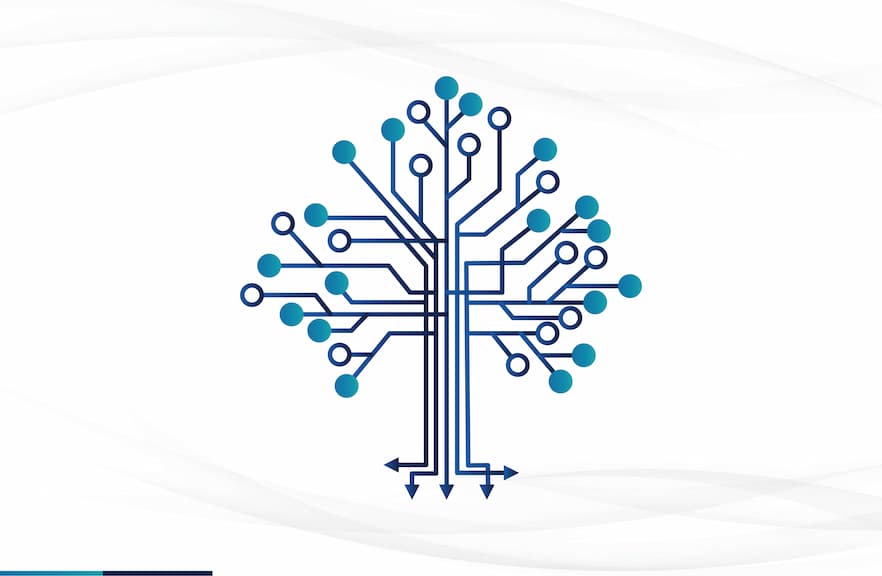Do you ever wonder how Google can give you the answers you’re looking for in a matter of seconds? If you take a closer look at your search results, you might notice that Google is not only providing you with web pages but also enhancing them with a “Knowledge Panel” that gives you a more relevant summary of information about your search. For example, if you search for Elon Musk, you’ll see a panel on the right side of the page with information about him, his social media profiles, and other similar celebrities. This is all thanks to Knowledge Graphs.
Google first popularized the term “Knowledge Graph” in 2012 when it introduced a feature of the same name. They use it to enhance the results of your search queries to improve your experience. Knowledge Graphs are semantic network graphs that link entities such as events, things, people, and concepts and the relationships between them. The information is organized in a way that both humans and machines easily understand.
Traditional data management systems are not able to capture the context of the data we store and have a hard time adapting to new data sources. On the other hand, Knowledge Graphs are flexible and can enrich themselves with new data, resulting in more meaningful details and more knowledge.
A Simple Example of a Knowledge Graph
Knowledge Graphs mimic how the human brain processes information by connecting relationships between different entities. A Knowledge Graph is composed of two crucial components: Nodes and Edges. Nodes represent specific entities, and Edges represent the relationships between those entities.
For instance, the knowledge graph for the user based on their music preference will look like the one below.
The applications of Knowledge Graphs are widespread across various industries. Let’s take a look at some of the most notable uses:
Machine Learning:
One of the key applications of Knowledge Graphs is in the field of Machine Learning. It can help improve machine learning algorithms by providing a structured representation of data. This is because they allow for a better understanding of the relationships between different entities. As a result, they can lead to more accurate predictions and improved decision-making. In addition, Knowledge Graphs can also be used to improve the explainability of machine learning models by providing a visual representation of the relationships and connections between different entities in the data.
Finance:
Financial Service companies can use Knowledge Graphs to assist in identifying the early warning signs of potential bankruptcy and detecting fraudulent activity. By providing a structured representation of data, Knowledge Graphs can help financial institutions and analysts identify patterns and relationships that might indicate financial trouble or suspicious activity. This can be achieved by analyzing large amounts of financial data, such as transaction data, and identifying patterns or relationships indicative of financial trouble or fraud. Furthermore, it can be used to identify the relationships between entities, such as customers and transactions, which can provide valuable insights for fraud detection and risk management.
Transportation:
The transportation industry can utilize Knowledge Graphs in various ways to improve the overall transportation experience for users. For example, by analyzing real-time traffic data, Knowledge Graphs can be used to assist in traffic management. This can be achieved by identifying patterns and relationships indicating traffic congestion, accidents, or other transportation-related issues.
Medicine:
In the field of medicine, Knowledge Graphs can be a valuable tool for understanding the effects of drugs on different species and researching the interactions between multiple drugs. In addition, knowledge Graphs can help medical researchers and pharmaceutical companies identify patterns and relationships that might indicate potential side effects or interactions between different medicines by providing a structured representation of data.
Entertainment
When it comes to the entertainment industry, knowledge graphs can be a valuable tool for discovering what’s popular. For example, a movie production company could use a knowledge graph to identify trends in film genres and make more informed decisions about what movies to produce. Similarly, streaming services can use knowledge graphs to suggest similar movies, shows, or music to users based on their viewing or listening history. Overall, the ability of knowledge graphs to uncover patterns and relationships within large data sets can help the entertainment industry better understand audiences’ interests.
Making Sense of Data with Knowledge Graphs
In conclusion, Knowledge Graphs are a powerful tool that allows us to understand and access information more efficiently. With its ability to be applied across various industries, it’s no wonder why it’s becoming an increasingly popular technology. Its ability to provide a structured representation of data, and identify relationships and patterns, makes it an asset to various fields. According to the Gartner Hype Cycle for Artificial Intelligence 2021, Knowledge Graphs are at the peak of inflated expectations which implies that the Knowledge Graphs have the tremendous potential to evolve bigger for next 5 to 10 years. With the rise of AI, we can expect to see a growing number of companies and organizations adopting this technology and reaping its benefits.
References:
https://www.youtube.com/watch?v=NvzofNF0jqI&t=1s
https://www.youtube.com/watch?v=sYejXeuZaeY
https://dmccreary.medium.com/knowledge-graphs-the-third-era-of-computing-a8106f343450
https://www.stardog.com/knowledge-graph/
https://www.poolparty.biz/what-is-a-knowledge-graph/




